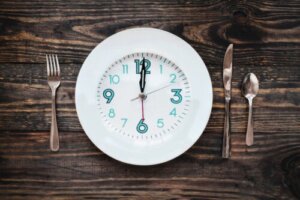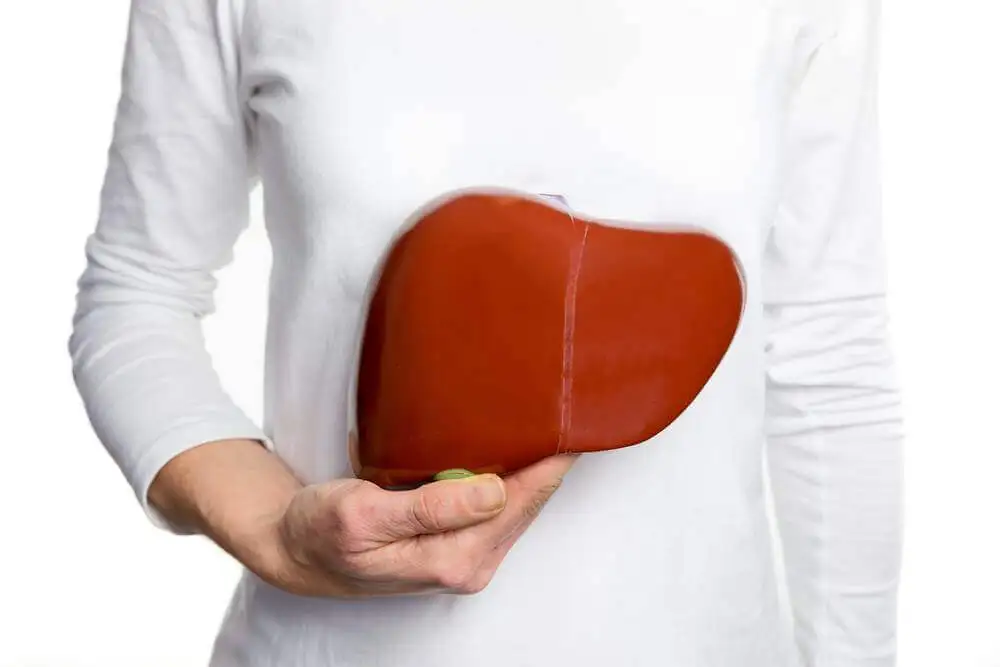What Are the Consequences of Not Eating for Several Hours?


Written and verified by the doctor Mariel Mendoza
Fasting is the term used to describe not eating for several hours. By definition, it’s the time without food until the next breakfast. There’s a natural daily fast that’s linked to the circadian rhythm and usually varies between 10 to 14 hours. However, prolonged fasting over time can be detrimental to health.
Fasting can be established from as little as 4 hours to 40 days without eating, with the possibility of subsisting on energy reserves. This will cause the body to use fat stores and other unhealthy metabolic pathways in order to degenerate energy to fulfill basic functions.
The state of metabolism when going several hours without eating
Fasting is divided into 3 phases depending on the main source of energy used. There are also 3 sources: carbohydrates (sugars and carbohydrates), lipids or fats, and protein.
We think you may also enjoy reading this article: Can You Eat Food that Has Fallen on the Ground?
The first phase
In this case, the energy fuel is glucose and all carbohydrates. The circulating glucose in the blood is metabolized and then the glycogen stores in the liver and muscle are broken down.
This can supply energy for 24 to 48 hours. At this early stage, 25% of the glucose goes to the central nervous system, while the rest goes to the muscle and red blood cells.
After this time, hypoglycemia (a decrease in blood glucose) occurs, which can manifest itself with dizziness, cold sweats, headaches, and general fatigue. In addition, the degradation of stored triglycerides proceeds, so that fatty acids are metabolized faster.
When the energy supply to the brain begins to be insufficient, the sympathetic nervous system activity increases with the consequent release of catecholamines (adrenaline and noradrenaline) that favor the degradation of lipids and proteins.
The second phase
If we continue without eating for several hours, after hypoglycemia, lipid consumption occurs. The drop in plasma sugar acts on the hypothalamus, the autonomic nervous system, the adrenal glands and the pancreas.
When triglycerides stored in adipose tissue are degraded, they release fatty acids into the plasma, which are converted into a metabolic intermediate that can generate energy in the form of ATP. They may also convert into ketone bodies, which are also an energy fuel.
There’s release of growth hormone which limits glucose uptake by peripheral tissues. In addition, it promotes lipid degradation and the synthesis of ketone bodies.
In addition, there’s an increase in noradrenaline and adrenaline, which inhibit muscle glucose uptake and insulin secretion. It also promotes the release of glucocorticoids, such as cortisol, which promotes protein degradation with the release of amino acids to produce more glucose.

The third phase
At this point, it’s no longer considered fasting, but starvation. This is an advanced stage that is practically irreversible. There are no more carbohydrate or lipid reserves and proteins continue to be degraded. There’s multiorgan involvement, with increased volume due to fluid retention (edema).
The symptoms associated with not eating for several hours
One of the main consequences of not eating for several hours is that the supply of glucose to the brain decreases. In children, this translates into difficulty in learning, memory problems, and even neurological damage.
Hypoglycemia occurs 4-6 hours after the last meal, with symptoms such as generalized weakness, dizziness, headaches, and bad breath. In addition to lack of concentration, memory impairment, irritability, and moodiness in adults.
With no food in the stomach, gastric acid irritates the stomach walls, causing gastritis. This translates into burning and pain in the epigastrium.
The sensation of hunger causes binge eating due to anxiety, in which people prefer to consume carbohydrates and fats in greater quantities than required. Also, the metabolism is slowed down in order to maintain as many reserves as possible, which generates weight gain.
The delay in intestinal transit causes abdominal distension, constipation, and a feeling of fullness after eating. However, a 12-16 hour fast is not detrimental to long-term health. In fact, this is what the intermittent fasting protocol is based on.
The refeeding state after fasting
When food is ingested after a period of fasting, a so-called refeeding state occurs as an adjustment mechanism to avoid another episode of hypoglycemia. In this case, triglycerides are the first things to be metabolized.
However, glucose undergoes a process of adaptation. Initially, due to low blood sugar levels, it’s only the liver cells that take up glucose. They receive it through the portal vein and distribute it to the brain and peripheral tissues.
This is because the liver remains synthesizing glucose for a few hours after ingestion – but not for the purpose of releasing it into the blood, but to restore hepatic glycogen stores.
As the plasma glucose concentration rises, so does the rate of uptake by the liver. Progressively, it will be metabolized via the glycolysis pathway and its excess will be disposed to glycogen and triglyceride synthesis.

Nutritional recommendations for meal times
For an efficient metabolization of the energy contained in the food consumed, it’s not only important to pay attention to how much we eat, but also how it’s distributed during the day. It’s recommended that our daily meals should be consumed with a frequency of 5 times per day.
In addition, the energy should be distributed with 20% of the total at breakfast, 10% in each snack, 30% at lunch and 30% at dinner. Snacks should take place at a frequency of one between breakfast and lunch, and another between lunch and dinner. This translates into consuming food every 3 or 4 hours.
In terms of quantity, the main meals should be balanced and in harmony, with 10-15 % of proteins, 15-30 % of fats and 55-75 % of carbohydrates. All the foods on the food pyramid should be included.
On the other hand, intermittent fasting is considered healthy if it’s done correctly and under supervision. It consists of a fast of 16 hours, with a short interval of time to eat at certain times during 8 hours. Then, fasting takes place again.
We think you may be interested in reading this, too: 14 Foods that Should Always Be in Your Fridge
Not eating for several hours can be an option
Many nutrition specialists recommend eating every 3 to 4 hours. Fractionating food decreases anxiety and maintains the feeling of satiety, which allows you to make more appropriate choices at your next meal.
However, intermittent fasting can be beneficial to your health as long as it is managed properly and guided by an expert. However, it’s important to remember that stopping eating in itself is not a factor in losing weight. It must be accompanied by a healthy diet plan and physical exercise.
All cited sources were thoroughly reviewed by our team to ensure their quality, reliability, currency, and validity. The bibliography of this article was considered reliable and of academic or scientific accuracy.
- Aranceta J. coord. Guía práctica sobre hábitos de alimentación y salud. [Monografía en Internet]. Instituto Omega 3, Sociedad Española de Nutrición Comunitaria; 2002 [acceso 15 de Julio de 2012]. Disponible en: http://www.pulevasalud.com/ps/Zips/9974/guia_practica_nutricion.pdf.
- Mario A, Núñez M, Gámez A. Alimentación saludable. Mediagraphic 2016.
- Saz P. Ayuno intermitente. Medicina Naturista. 2017;11(1):3-9.
- Saz P, Ortiz M. Fisiología y bioquímica en el ayuno. Medicina Naturista. 2007;1(1):10-19.
This text is provided for informational purposes only and does not replace consultation with a professional. If in doubt, consult your specialist.








